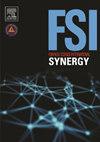Chaos theory and its applications in forensic anthropology
Q1 Social Sciences
引用次数: 0
Abstract
Chaos theory, initially developed by Edward Lorenz, a mathematician and meteorologist at the Massachusetts Institute of Technology, has evolved from a theory of the natural and physical sciences to a theory that has broad, interdisciplinary applications. Fundamentally, chaos theory connects various scientific disciplines by explaining how seemingly random behaviors that happen in non-linear or “chaotic” systems, no matter how minor, can lead to major consequences. While forensic anthropology is often considered an a-theoretical subfield of anthropology, the discipline has witnessed a proliferation of theoretical publications in recent years. It engages with a variety of theories, ranging from low-level theories of archaeological recovery to high-level theories such as human evolution and adaptation to understand human variability. However, in its primacy, forensic anthropologists struggled to understand the systems and agents involved in forensic contexts. The utilization of chaos theory and non-linear systems has the potential to transform the field, providing a new lens to better understand forensic contexts. This paper will delve into the interdisciplinary ways forensic anthropology can employ chaos theory, specifically in developing a range of non-linear systems theoretical frameworks, especially in work concerning human decomposition and reconstruction of forensic contexts.
混沌理论及其在法医人类学中的应用
混沌理论最初是由麻省理工学院的数学家和气象学家爱德华·洛伦兹(Edward Lorenz)提出的,它已经从一种自然和物理科学理论发展成为一种具有广泛跨学科应用的理论。从根本上说,混沌理论通过解释在非线性或“混沌”系统中发生的看似随机的行为,无论多么微小,都可能导致重大后果,从而将各种科学学科联系起来。虽然法医人类学通常被认为是人类学的一个理论分支,但近年来,该学科见证了理论出版物的激增。它涉及各种各样的理论,从考古恢复的低级理论到人类进化和适应等高层次理论,以理解人类的可变性。然而,在其首要地位上,法医人类学家努力理解涉及法医环境的系统和代理人。混沌理论和非线性系统的应用有可能改变这一领域,为更好地理解法医环境提供新的视角。本文将深入探讨法医人类学可以运用混沌理论的跨学科方法,特别是在发展一系列非线性系统理论框架方面,特别是在有关法医环境的人类分解和重建的工作中。
本文章由计算机程序翻译,如有差异,请以英文原文为准。
求助全文
约1分钟内获得全文
求助全文
来源期刊

Forensic Science International: Synergy
Social Sciences-Law
CiteScore
4.90
自引率
0.00%
发文量
75
审稿时长
90 days
 求助内容:
求助内容: 应助结果提醒方式:
应助结果提醒方式:


